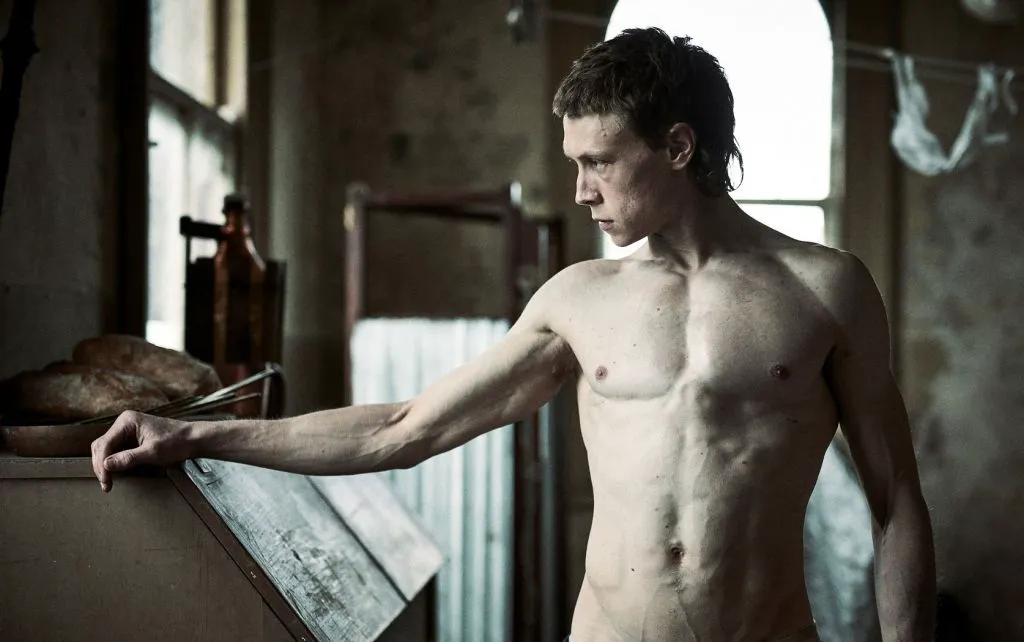The True History of the Kelly Gang: A Punk Rock Western
Ned Kelly (George MacKay), born into a family of Irish convicts exiled to Australia, struggles under the weight of British oppression. His father barely provides, while his mother appeases a British officer (Charlie Hunnam) to ease her children’s lives. Years later, Ned, now a man, finds himself at the heart of Australian civilization. Betrayed by another Englishman (Nicholas Hoult), he decides to form his own gang of bushrangers, striking fear into the hearts of British colonizers in the late 19th century.

“The True History of the Kelly Gang,” the latest work from Australian visionary Justin Kurzel, has finally arrived. Kurzel is a director with an undeniable sense of style, though he doesn’t always connect with his material. His “Macbeth,” despite its visual merits, is best left unwatched (disappointment is likely), and “Assassin’s Creed” should be avoided at all costs. In both cases, the strict dramaturgy of the source material clashes with Kurzel’s flamboyant cinematography, as pure narrative is of little interest to him.
A Director’s Triumph
In this sense, “The True History of the Kelly Gang” feels like a perfect match for the director. In Justin’s hands, the legendary (especially for Australians) story of Ned Kelly, a bushranger Robin Hood in a dress, transforms into a cinematic experience, a cinematic flow where coherent plot gives way to pure cinemagic. The director’s music video-esque style, with its love for sharp editing and stylized poetics, works well with the film’s rebellious spirit. The aggressive punk rock soundtrack, the constantly shifting, unstable, wide-angle camera with sudden transitions to subjective shots – the whole film feels like one long music video by some Australian garage rebels (or, say, King Gizzard, if they were to experiment with genres again), for whom Ned Kelly has become a symbol of defiance and freedom.
The Making of a Legend
Kurzel isn’t particularly interested in the Kelly Gang’s exploits – a group of young ruffians in women’s dresses and homemade knight’s armor. The viewer only gleans what made them legendary through fleeting phrases. Instead, he focuses on the classic “hero’s journey,” meticulously crafting Ned’s childhood complexes and the injustices he faces: the poor treatment by British colonizers, a weak father, a cruel mother who sells him into servitude to an unkempt bushranger (a brief but effective appearance by Russell Crowe). This isn’t particularly interesting in the context of the larger story – it’s generally understood that Kelly didn’t become a robber out of a good life – but it’s crucial for the context of the time. It’s an ethnographic Australian myth with all the associated attributes: the ecocentric aesthetic of the yet-unburnt bush (as Australians call their forests) and the all-consuming hatred of British military rule.
Themes of Nature and Hatred
Therefore, as in the recent “The Nightingale,” the forest plays an important role – a symbol of man’s lost connection to his biological, animal nature. And all the English characters are scoundrels and bastards, with the biggest bastards being those who initially seem the most innocent. Here, however, a question arises for director Kurzel: if he dislikes the British so much, why does he cast Londoner George MacKay as the national hero, and New Zealanders Thomasin McKenzie and Russell Crowe as his wife and mentor, respectively? It seems somewhat unpatriotic. However, it’s unlikely that even the most ardent Australophiles will have complaints about MacKay – he’s just too damn good.
Violence and Renegade Spirit
Perhaps the only strange thing about “The True History of the Kelly Gang” is that, despite the film’s renegade spirit, Justin Kurzel seems somewhat afraid of violence, hiding the most brutal moments behind editing cuts and only allowing himself to spill blood on screen a couple of times. His shyness doesn’t quite suit the film and reinforces the feeling that, for a film about blind protest, “The Kelly Gang” lacks actual protest – essentially, only the final shootout makes up for it. Without question, however, it’s a great scene and probably wouldn’t have worked as well if the whole film consisted of such vital outbursts of animal fury.